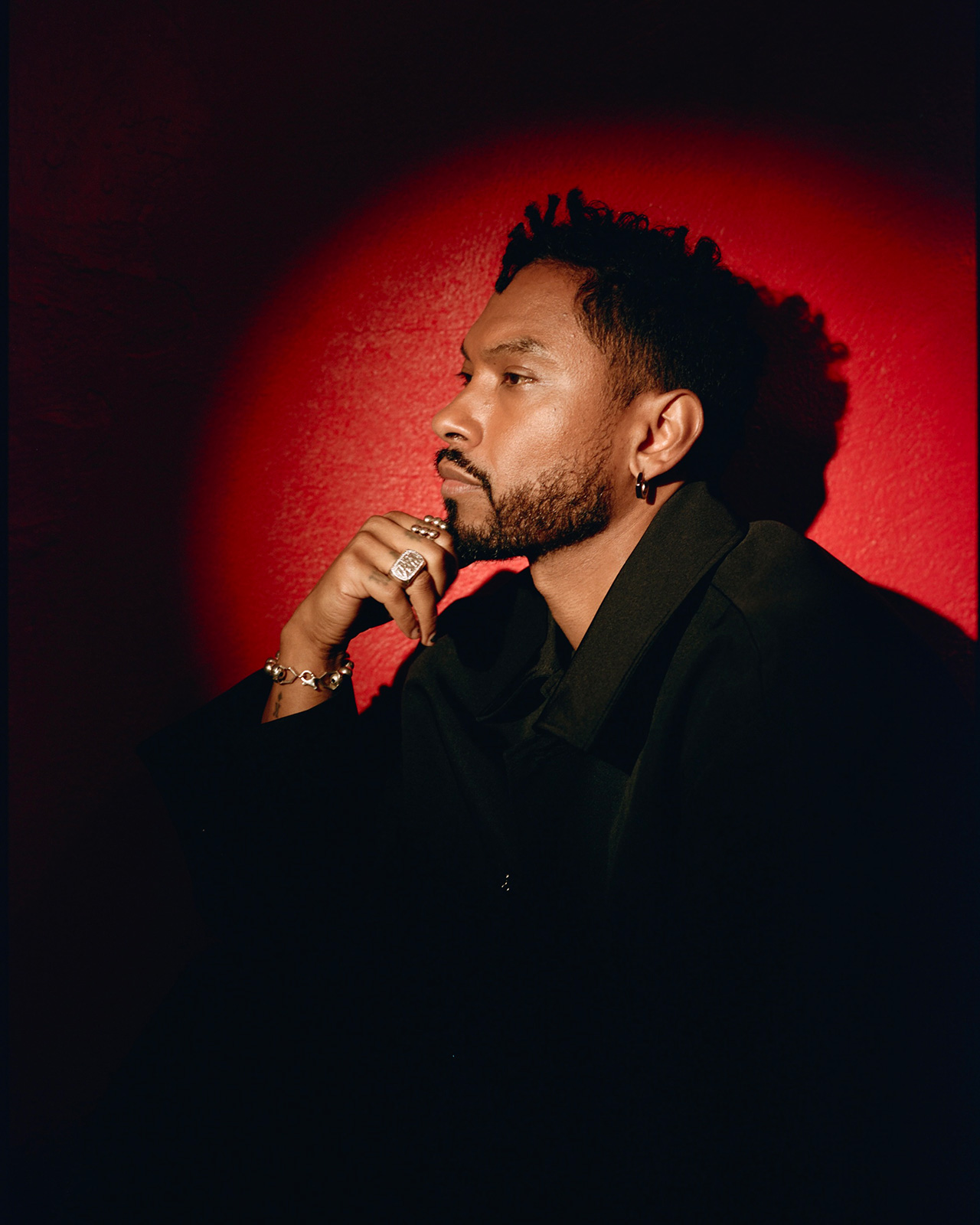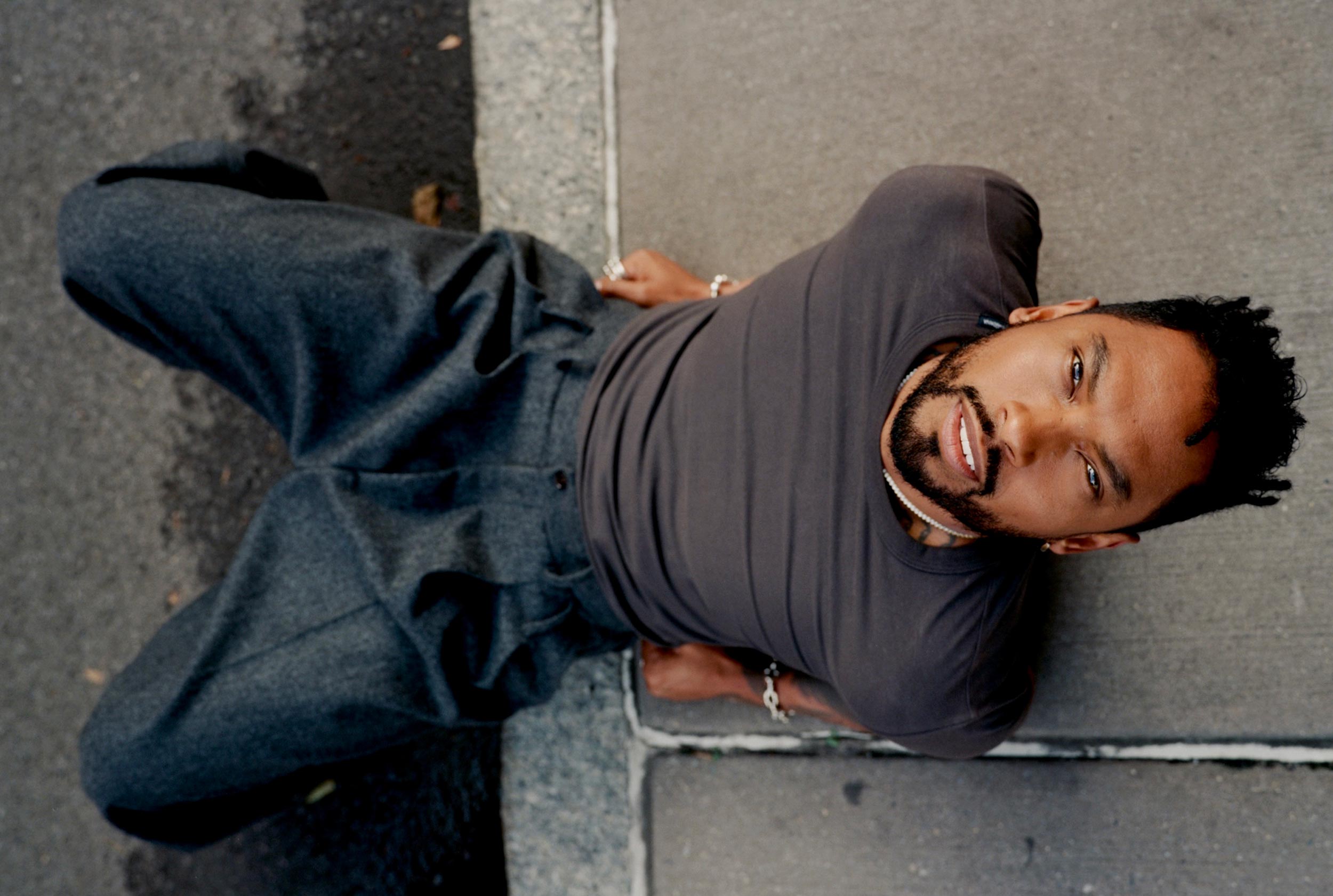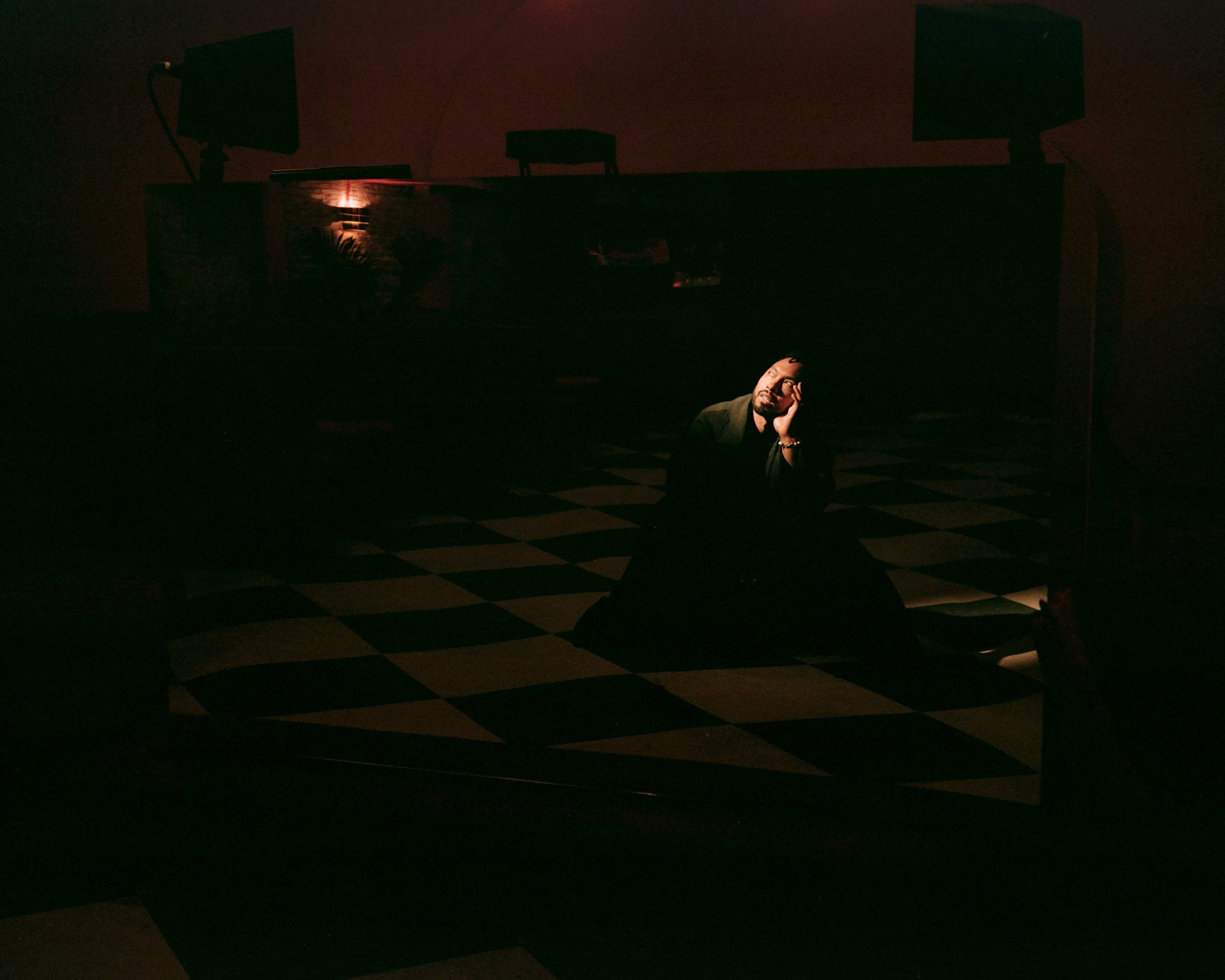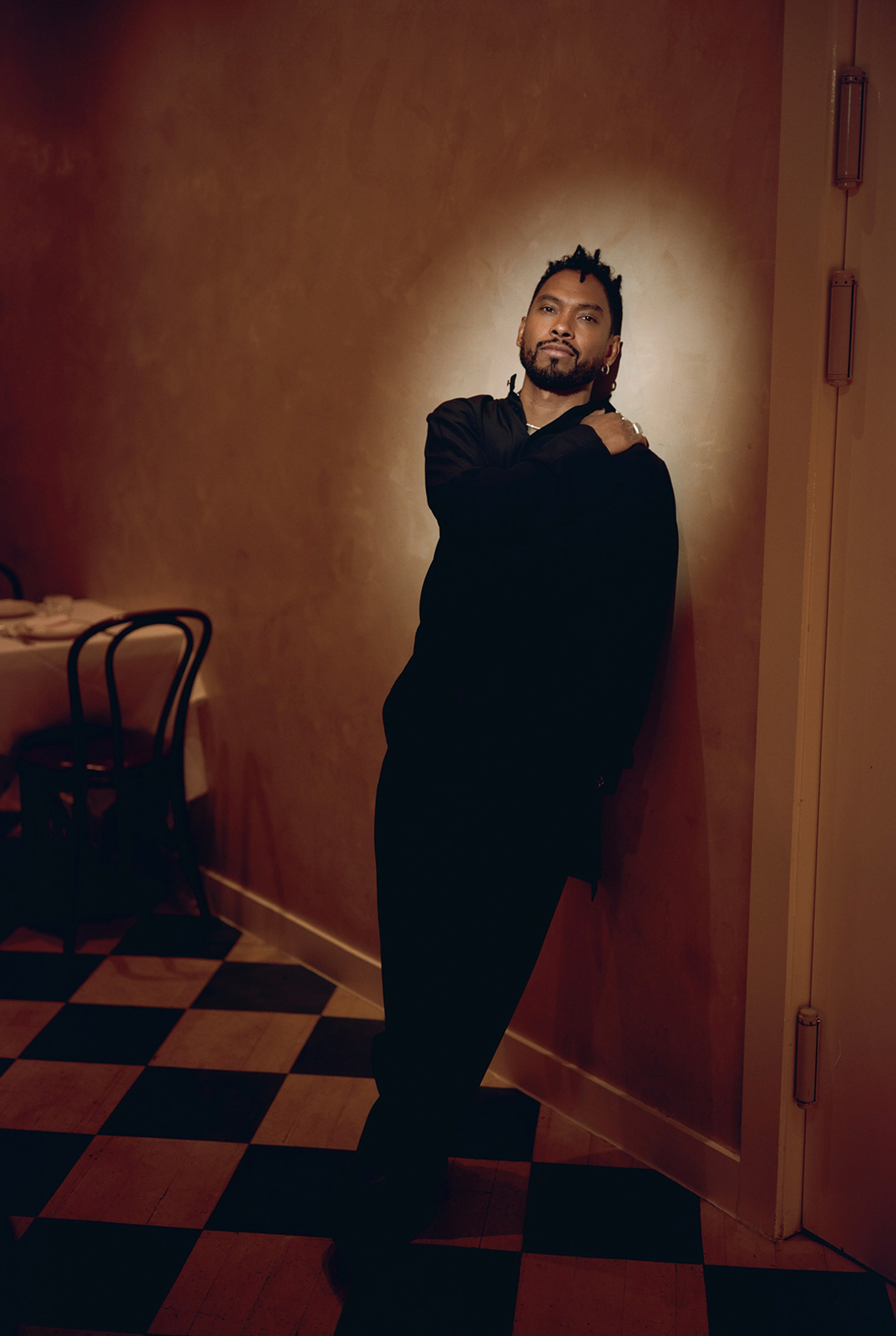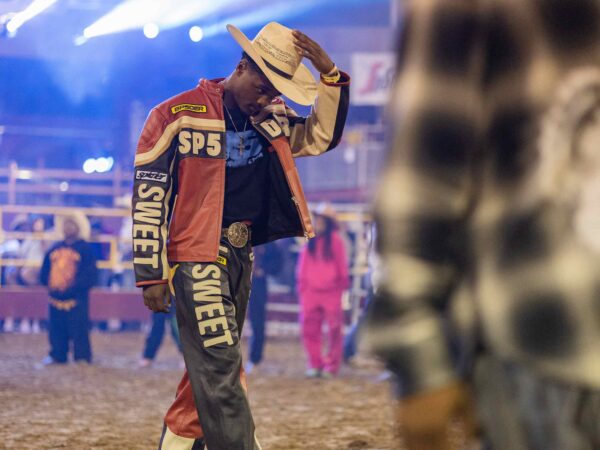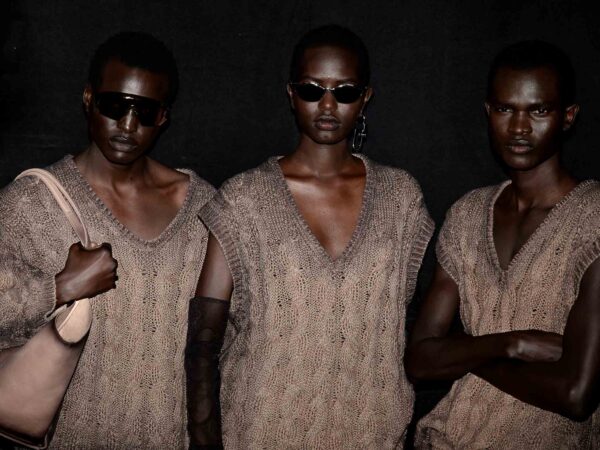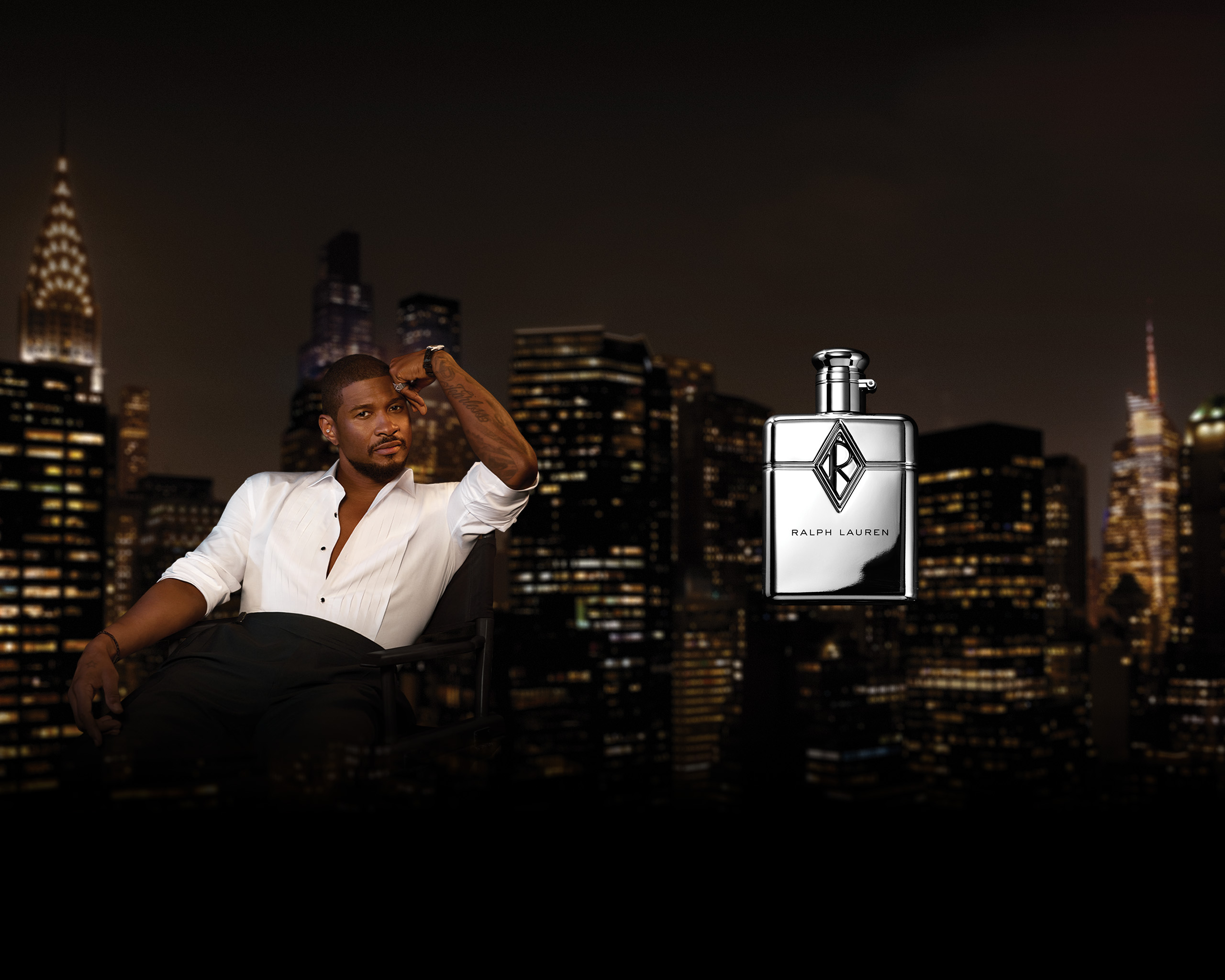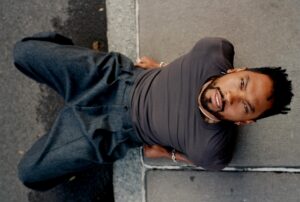Marked by fatherhood, divorce, and a shelved album, the Grammy-winning artist releases his grunge-inflected record confronting harsh political realities and personal reckoning
The word that defines Miguel’s state of mind right now is resolve. “My son, this album, my birthday,” he tallies, pausing between bites at the subterranean New York restaurant we are lunching at. He turned 40 last Thursday. CAOS, his first album in eight years, arrived on the same day. The two seem linked, a threshold moment, as much a confrontation as a release. “It’s like I’m feeling both things: a resolve and a finality.”
To the ear, the album feels volcanic—a purge of memory, political angst, and personal pain. The past eight years of Miguel’s life have been punctuated by rupture and reckoning. “I was running into the same walls again and again,” he explains. “I’m a collector by nature. I collect emotions that never got dealt with, and they just become part of me. Some things needed to be fucking dealt with.” His glinting laugh diffuses the weight of his words.
CAOS, which translates to ‘chaos,’ is in many ways a departure from the Grammy-winning R&B artist’s previous work. In a first for Miguel, the titular track is sung in Spanish. This was intentional. “It’s meant to say, I know you thought you knew me, but I’ve changed,” he grins. “There’s tremendous pride in stepping into that.” In 2019, Miguel released Te Lo Dije, an all-Spanish reissue of his 2017 album War & Leisure and sang in Spanish when he lent his voice to Disney’s Coco, performing the Oscar-winning song “Remember Me”—but this is his first major studio release with Spanish at the forefront. Raised between Black and Mexican heritages, he describes a pull toward the language of his ancestors. “Singing in Spanish feels like home,” he says. “When I visited my family’s village in Michoacán, something in me recognized the place.” He still writes in English, then engineers it into Spanish, calling his tías and tíos for advice. “It’s like a new instrument,” he says. “A new way to communicate.”
I ask if he sings in Spanish to deliberately up the voltage of an already politically-charged album, but Miguel demurs at my assumption. It’s hard to deny that Latin culture has taken on a distinctly political significance in American pop culture today. The upcoming Superbowl will host the first ever halftime show performed entirely in Spanish; the announcement of Bad Bunny, who recently canceled his US tour amid fears of ICE targeting his performances, as headliner whipped up an immediate storm of controversy. Conservative pundits and political figures denounced the choice, with Donald Trump calling it “absolutely ridiculous,” and MAGA influencers, “anti-American.”
“It’s not a political album,” Miguel hedges, “it’s an aware album.” But I’m not convinced. In the caption of an Instagram post promoting CAOS, he refers to the present as a “fascist apocalypse.” He threads scenes from Gaza and sings of a “Holocaust in the Holy Land” in two separate songs. The cover art for his hit single “New Martyrs (Ride 4 U)” depicts Luigi Mangione, gun raised as he kills the CEO of UnitedHealthcare. “The album meets the current political moment with an awareness and a question mark,” he tells me. I’d argue that featuring a political assasination in a song’s cover art reads more like an exclamation point.
At an NYU event earlier this month, Miguel was named the 2025 Scholar-in-Residence of the Steinhardt School of Culture, Education, and Human Development. During his talk, he shared slides branded entirely in the CAOS color palette and typeface. “Neutrality, Palatability, Status Quo is the enemy,” read one. “Stand up for Palestine, and stand up for oppressed people around the world,” read another. One slide depicted Miguel wearing a shirt that read “Free Palestine, Sudan, Syria, Congo,” going on to champion musician and civil rights activist Nina Simone’s famous 1969 speech, which stated that “an artist’s duty is to reflect the times.” (In recent memory, alongside many American colleges and universities, NYU ruthlessly cracked down on pro-Palestinian student protests.)
That same evening, Miguel screened a sneak peek of the music video for “New Martyrs (Ride 4 U).” It depicts wounded journalists wearing press vests tending to each other’s gunshot wounds, in tears in the back of a van marked PRESS. Considering that last year was declared the deadliest on record for journalists, the visual speaks for itself.
Despite his hedging, Miguel’s stance is clear: “I’ve been public about freeing Palestine, freeing Sudan. No people should be subjugated. At this point in time, we should be far beyond that. We do this scroll thing enough,” he goes on, miming the hypnotic doomscrolling thumb of our era. “I just feel a tremendous responsibility to at least acknowledge what’s going on.”
And acknowledge he does. “There’s chaos all around us. It seems to be what everyone is dealing with—internally and externally.” It’s hard to imagine a man with such a velvet voice and demeanor suffering a day in his life. The word “chaos” feels less like turmoil so much as acceptance as it leaves his lips—a surrender to entropy.
For all Miguel’s talk of resolution, the record feels haunted by loss. Throughout our conversation, there’s a sense of something unspoken. Miguel and his longtime partner Nazanin Mandi divorced in 2022 after four years of marriage and nearly two decades together. They met when they were just 18. He never mentions Mandi directly in our conversation, but grief echoes in the omission. On “New Martyrs,” he sings: “How much can I lose without changing who I am?” On “RIP”: “It hurts to be human.” On “Always Time”: “Maybe this time love means letting go.”
“Learning to let go,” Miguel says, was the most difficult step in the creation of the album. “[I didn’t actually need] parts of myself that I thought were my identity.”
Beyond just the personal, Miguel has had to relinquish components of the professional and the creative. “Viscera didn’t feel resolved,” he explains of his unreleased album, originally promoted and slated for launch in 2023. “I was trying to negotiate how I was feeling and craft a record with a broad reach, but it was too much of a compromise. CAOS came when I got clear.” When I ask if the music industry got in his way, he says the issue wasn’t a label hold-up so much as a systems check. He points to disorder within his team as an obstacle. CAOS took shape with an entirely new unit, salvaging a third of Viscera’s tracks.
This summer, Miguel posted a black-and-white video of himself on Instagram screaming into the void. “He been tripping ever since he lost his girl,” reads a popular comment. In 2023, he dangled by metal hooks pierced through the flesh of his back in a suspension performance that went viral. “It was an artistic expression,” he insists. A sort of rite of passage. “I was asking, Why do we carry pride in our pain? Why do we identify with it?” CAOS’s visual language is an extension of this exorcism, its aesthetic drenched in devil-red fonts and infernal motifs. The cover art for “RIP,” a track he describes as “another crash-out anthem,” shows men in horned demon masks. Compare this to the Miguel on the cover of War & Leisure, floating weightlessly above the sand, dressed in a skintight patterned maroon suit and a riotously bright pink shirt.
In serenity’s stead, CAOS is a grunge-inflected record, often channeling brute emotion over polish. The track “Perderme,” a horny supplication for oblivion, dredges a stream of consciousness in the spirit of Kurt Cobain. On “Nearsight [SID],” my favorite track on the album, Miguel laments over a two-note synth strum, drifting over a spacey hum. The song hovers until the drums finally crash, and he bellows a primordial groan, the sound of growing pains.
“Growing up, I always gravitated toward the dissonance of alternative music,” Miguel says, naming Nirvana, Soundgarden, and Nine Inch Nails as touchstones. “It just feels like that time—this universal angst. It felt natural to me. I wanted to capture that rawness.” I observe that “Nearsight [SID]” has all the trappings for a viral TikTok soundbite hit, but the thought never crossed his mind: “I wasn’t thinking about that. I’m really grateful that I wasn’t. Maybe to my detriment—but I was just making what felt real.”
In “Angel’s Song,” Miguel’s voice overlays his toddler’s gurgles. The track is dedicated to his one-year-old son, whom he shares with Margaret Zhang, former Editor-in-Chief of Vogue China. Fatherhood, he says, has refined his sense of purpose. “It’s reinforced my resolve to make everything I do going forward really intentional, because it all has a direct impact on my time with him.” The world may be tentative, but the shift is bringing clarity. “It’s made me lock in,” he continues. “I want to be a great father.” The same discipline that drives his artistry now governs his life, insisting that time spent matters only if spent in service of something that lasts.
The release of CAOS comes in the shadow of D’Angelo’s passing, an artist Miguel calls “an absolute inspiration, a hero. He wasn’t trying—he just was.” That ease, in his view, is what real innovation sounds like. For all its agitation and intensity, CAOS feels just as unforced. At once a break-up and a comeback record, it is urgent, yet born of natural necessity.
CAOS is the byproduct of an alchemical transmutation—an artist burning away his former self to reach some rawer, more essential truth. The album is neither cinder nor magma, rather it grinds, grunts, hisses, sizzles. It’s not so self-aware—the work of someone guided more by feel than design—crafted with just a touch of deliberation, mostly pure execution. By way of that intuitiveness, CAOS is textured by the world it is unleashed into, like a vinyl groove etched by vibration, synced with the resurgence of grunge and the defiant ascendancy of Latino culture. As much as CAOS is about who Miguel was and who he’s becoming, it’s also an album of now. A new, gritty artist forms before our eyes and ears, amidst a strange, even grittier world.
He may claim a cathartic resolve today, but the Miguel of the album’s release is not the same as the Miguel of its creation. After eight years in the wilderness, his reluctance to name the pain that haunts CAOS suggests a musician either not quite through the throes of transformation, or a person trying to put the past behind him. Who we’re trying to become stays forever ahead of us, and the path there demands we destroy who we’ve been.
He smiles as the plates are cleared from our lunch table: “I’ve got some bruises, some scars, but I’m proud of who I am and where I’ve come from. This is an actual beginning that’s taken a really long time to get to.”
Lighting Technician Sean Howard. Photo Assistant Antorie McFarlane. Shot at Jean’s.



